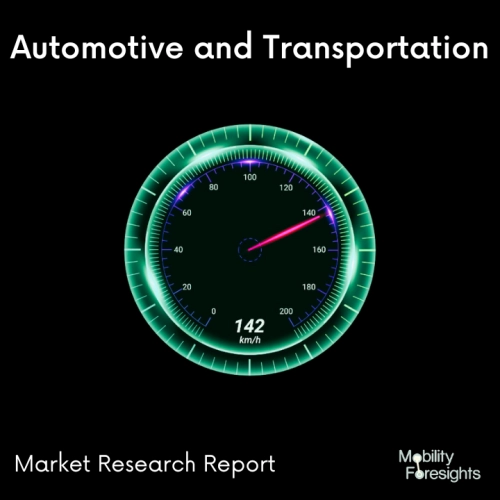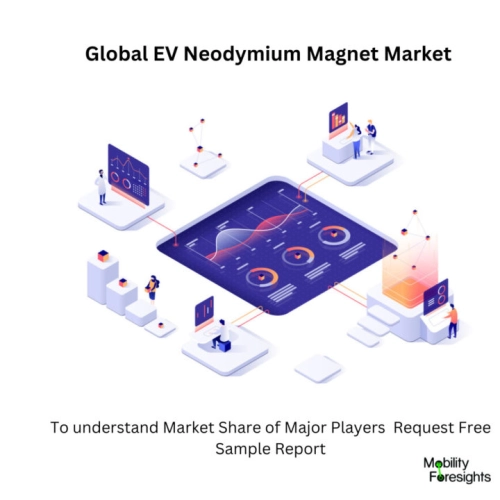
- Get in Touch with Us

Last Updated: Apr 25, 2025 | Study Period: 2024-2030
Neodymium-iron-boron (NdFeB) magnets have the greatest magnetic fields per volume of any magnets on the market, allowing for the creation of thin and light products. Thus, NdFeB magnets have emerged as essential in cutting-edge clean technologies like wind turbines and electric automobiles (EVs).
The most common kind of rare-earth magnet is a neodymium magnet, commonly referred to as a NdFeB, NIB, or Neo magnet. Neodymium, iron, and boron were combined to create the permanent magnet's Nd2Fe14B tetragonal crystalline structure.
Hard disc drives, mobile phones, and television audio and video systems all use neodymium magnets in the world of information technology. Neodymium magnets are also frequently employed in the manufacture of on-off switches, filters, ionisers, and magnetic separators.
Neodymium magnets are essential parts of automotive electronics, which are widely employed in systems for energy transmission, safety and information systems, electronic control units, and multimedia systems for vehicles.
Lithium-ion (Li-ion), Nickel Manganese Cobalt (NMC), Nickel Metal Hydride (Ni-MH), Lithium Sulphur (Li-S), and Lead-Acid are the five battery chemistries that are most frequently used in electric vehicles. Instead of Lithium-ion batteries, hybrid vehicles frequently use nickel-metal hydride batteries.
An electric vehicle is known by the abbreviation "EV." Vehicles known as electric vehicles (EVs) can run entirely or partially on electricity. Because they have fewer moving parts to repair and consume little to no fossil fuels, electric vehicles are very economical to operate (petrol or diesel).

The Global EV Neodymium magnet market accounted for $XX Billion in 2023 and is anticipated to reach $XX Billion by 2030, registering a CAGR of XX% from 2024 to 2030.
New York Neodymium Market Size, Share & Trends Analysis Report By Application, By End-use, By Region And Segment Forecasts is now available, according to Reportlinker. com.the world's biggest producer of permanent magnets and rare earth metals.
According to the global mining data released by the USGS, the nation produces more than 70% of the world's permanent magnets and 60% of its rare earths. The availability of rare earth minerals in China is a key reason in the country's dominance, particularly in the production of rare earth permanent magnets.
Magnets are predicted to see the fastest CAGR in terms of value during the forecast period. Segment expansion is being driven by their expanding demand from end users in electronics, wind energy, and automobiles.
| Sl no | Topic |
| 1 | Market Segmentation |
| 2 | Scope of the report |
| 3 | Abbreviations |
| 4 | Research Methodology |
| 5 | Executive Summary |
| 6 | Introduction |
| 7 | Insights from Industry stakeholders |
| 8 | Cost breakdown of Product by sub-components and average profit margin |
| 9 | Disruptive innovation in the Industry |
| 10 | Technology trends in the Industry |
| 11 | Consumer trends in the industry |
| 12 | Recent Production Milestones |
| 13 | Component Manufacturing in US, EU and China |
| 14 | COVID-19 impact on overall market |
| 15 | COVID-19 impact on Production of components |
| 16 | COVID-19 impact on Point of sale |
| 17 | Market Segmentation, Dynamics and Forecast by Geography, 2024-2030 |
| 18 | Market Segmentation, Dynamics and Forecast by Product Type, 2024-2030 |
| 19 | Market Segmentation, Dynamics and Forecast by Application, 2024-2030 |
| 20 | Market Segmentation, Dynamics and Forecast by End use, 2024-2030 |
| 21 | Product installation rate by OEM, 2023 |
| 22 | Incline/Decline in Average B-2-B selling price in past 5 years |
| 23 | Competition from substitute products |
| 24 | Gross margin and average profitability of suppliers |
| 25 | New product development in past 12 months |
| 26 | M&A in past 12 months |
| 27 | Growth strategy of leading players |
| 28 | Market share of vendors, 2023 |
| 29 | Company Profiles |
| 30 | Unmet needs and opportunity for new suppliers |
| 31 | Conclusion |
| 32 | Appendix |